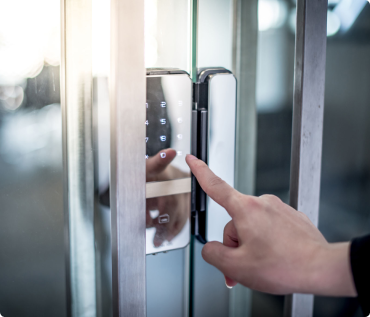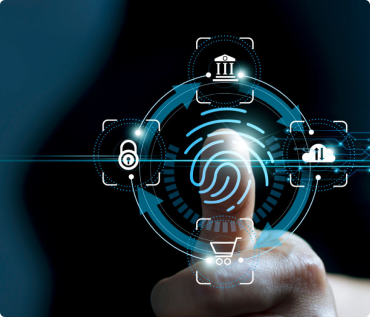As
the World is experiencing a surge of digitization, it has now become essential
for the banking sector to bring data privacy & security with utmost
convenience. Today, as the digital age augments its way through all our lives,
all financial institutions need to gather an incredible level of security for
consumers accompanied by accessibility by penetrating biometrics in the banking
sector.
In addition, with several innovations in the technological field, long gone is the time of having standard passwords as banks all over the world are legislating revolutionary biometric identification systems. Today, biometrics has numerous applications in the banking sector, such as KYC, Micro-ATMs, payment authentication systems, and beyond. In this blog, we're going to explore all of these. Let's get started!
Here Are The
Five Prominent Banking Applications Of Biometric Technology:
1) Payment Authentication System — In today's time, we all have witnessed an increase in digital fraud, and that is the reason why a lot of customers do not have faith in sending money via a digital gateway. In order to avoid fraudulent transactions and achieve the faith & trust of customers or account holders, the Indian banking sector is implementing biometric devices to authenticate or affirm payments. The advancement in payment authentication systems encompasses payments through mobile apps & digital wallets, which include the important steps of verifying the customer's identity with biometric authentication. Additionally, with the incorporation of IRIS and fingerprint recognition methods in payments via Aadhaar pay transactions, financial institutions are making way for trust-able payment systems in the country.
2) KYC — KYC stands for Know Your Customer — it is one of the highly recognized onboarding processes for banks in order to identify their account holders or customers to ensure that the banking services are not misused in any manner. When it comes to the financial institutions of numerous countries, they are now accomplishing the KYC procedure of their consumers by utilizing the technology of biometric identification, making the procedure more efficient, user-friendly, and reliable.
Nonetheless, with the increase in cases such as identity fraud, financial institutions must focus on collecting the biometric data of their customers in order to verify their identity before gaining access to financial services. Talking about Indian banks, they conduct an immediate eKYC of customers, on the basis of their biometric & aadhar details, such as IRIS or fingerprint, after asking their permission to utilize this information.
3) Micro-ATMs — Micro-ATMs that are biometric-based, are actually an updated version of PoS device (Point of sale), on which users are allowed to place their fingerprint or IRIS for making payments to vendors or merchants as the device connects the core systems of the bank with it. In order to initiate financial inclusion, GOI under the AePS, i.e., the Aadhaar-enabled Payment System, expands Aadhaar & biometric-based banking services to the citizens of the country through biometric-based Micro-ATMs. Biometric-enabled POS devices, they are used widely as Micro-ATMs to acquire data in regard to a user, enabling them to deposit & dispense cash, review the account balance, and initiate fund transfers to several other banks in a more safe & secure way via Aadhaar Pay transactions.
4) Merchant Payments System — When it comes to the merchant payment system, they have emerged as a reliable, efficient, and comfortable mode of banking for all customers who are not able to access banks or desire to purchase goods/services in a cashless arrangement. In most of the cases, semi-urban & rural districts of India are encountering the absence of electricity or quick accessibility to financial institutions. Therefore, in order to make sure that the accessibility of banking services to the population of these places is done properly, merchant payment systems have been made feasible to them via Aadhaar-enabled biometric micro-ATMs or through merchant applications such as BHIM Aadhaar Pay.
5) Attendance System — You must know that biometric technology is not just limited to providing transactional security with amenities & comfort to the customers. But, it can also prove to be an efficient & well-organized solution for banks & several other financial solutions encompassing NBFC. One of the traditional practices of marking employees' attendance in the register evokes the malpractice of bringing inaccuracy, buddy punching, generating errors, lack of security, etc. In addition, the complaints of customers about banking officials not being present in the branch offices, attracted the requirement to implementation of a biometric-based attendance system to ensure the punctuality and availability of bank employees in the offices.
Here are the following advantages of the biometric attendance system, which is why the banking and non-banking institutions are switching towards this technology:
- Helps in maintaining punctuality among the staff.
- Records accurate and precise personnel attendance data via the identification process.
- Prevents the situation of buddy punching.
- Helps in saving a lot of time.
- Highly efficient and simple payroll integration. efficient and simple payroll integration.
What Are The Advantages Of Biometric Authentication
In the matter of biometric identification in the sector of digital banking, it has proved to deliver thousands of benefits in one go. First of all, it is highly convenient and easy to utilize and is undoubtedly the best out of the others. Whether it is about placing your finger on a biometric reader, taking a picture, or simply talking over the phone, not the slightest bit of all these actions includes any great difficulty, as it can happen with codes or passwords, which require to be remembered. Since no two faces, fingerprints, or voices are identical, the security of this kind of identification is extraordinary.
It is also a technique that especially reduces the likelihood of suffering offenses such as phishing, which is a fraudulent practice with which cyber criminals aim to obtain access to our personal data by sending emails. Ultimately, one of the major advantages of biometric security is its constant innovation, so as there are advancements in the technology, so does the advancements that takes place in the authentication methods.
Is Biometrics The New Future Of Security In Digital Banking?
In Conclusion
In
the banking sector, the utilization of all these biometric authentication
systems depicts a step forward in the preservation of user data. For example,
by strengthening or replacing the traditional alpha-numeric passwords. They
also administer as a quick, reliable, and convenient technique of verification
when utilizing or buying products & services. However, for any further
queries, reach out to us any
time.





